- Home
- Bill Pronzini
Crazybone Page 10
Crazybone Read online
Page 10
Trevor Smith showed up in the pro-shop at twelve-forty. He looked hopeful when he first saw me, then worried by my expression, and finally resigned when I took him aside and told him I hadn’t found out anything yet. “Information’s the reason I’m here,” I said.
“What kind of information?”
“For one thing, an address for Dale Cooney.”
“Mrs. Cooney? What do you want with her?”
“She was having an affair with Jack Hunter. Pretty serious, from what I gather. Maybe he was less careful about letting something slip in the sack than his wife was.”
Smith said with a flare of anger, “That’s damn crude.”
“All right, maybe it was. But none of this business is of high moral caliber and I don’t feel like being polite about it anymore. With you or anybody else. Can you tell me where Dale Cooney lives?”
“Yes,” he said, thin-lipped. “Burnt Leaf Road, not far from here. I don’t know the number but I’ll find out.”
“You do that. But first, answer some questions about Doc Lukash.”
Caught him off guard again. “What about Mr. Lukash?”
“Did he have an affair with Sheila?”
Smith made a grinding noise with his teeth.
“Come on, now,” I said. “Was he one of her lovers?”
“You make it sound as if she had a whole string—”
“Yes or no?”
“No. There was some gossip about it a while back, before Sheila and I got together, but that’s all it was.”
“How do you know that’s all it was?”
“Sheila said so. I asked her... I wanted to know... and she said absolutely not. He made a pass at her, more than one, but she wouldn’t have anything to do with him. I believe her.”
That makes one of us, I thought. As if people who cheat on their spouses never lie; as if the current occupant of the White House never lied. “What can you tell me about Lukash? Married, family man?”
“Yes. Wife and two sons, both at Stanford.”
“What is euphemistically known as happily married?”
“I don’t see how, if he’s making passes at other women. Besides, his wife’s a bitch.”
“Yes?”
“Bosses him around. Bosses everybody around.”
“So he’s a chaser.”
Smith shrugged. “The only gossip I’ve heard is the crap about him and Sheila.”
“What would his wife do if she caught him cheating?”
“Divorce him. Or Bobbittize him. She’s the type.”
So maybe that’s what’s scaring him, I thought. Doesn’t want the wife to find out about the lust in his heart for Sheila Hunter, requited or not.
I said, “Back to Sheila. If she wasn’t seeing Lukash, who was she seeing before you?”
He ground his teeth again. “Nobody.”
“No gossip about her and anybody else?”
“There’s always gossip floating around here.”
“Linking her and which men?”
“Listen, I don’t want—”
“I do want. Names, Trevor.”
“Why? The men... they don’t know anything about where she and Emily went.”
“Let me find that out for myself.”
“Cheap gossip, that’s all it is. You just remember that.”
I waited.
“All right.” He spat three names at me as if they were a bad taste in his mouth.
“They all live in Greenwood?” He nodded, and I said, “I’ll need addresses for them, too. And occupations and anything else you can tell me so I’ll have some idea of who I’m dealing with if I have to talk to them.”
“If?”
“I won’t do it except as a last resort. And if I do, I won’t mention you.”
“Is that supposed to make me feel better?”
“Look,” I said, “the bottom line here is that I’m on your side and Sheila and her daughter’s side. I think I told you that before. Don’t make me say it again.”
“Okay,” he said heavily. “Okay. I’m worried about her, that’s all.”
“Believe it or not, so am I.”
“I’ll get those addresses.”
11
Burnt Leaf Road was a snaky passage that led up into the hills. Dale Cooney had told Charles, the bartender, that she lived exactly one mile from the country club. Not so, according to my odometer, which measured the distance at 1.1 miles. Maybe the odometer in her Mercedes was off; mine had always been reliable. Or maybe she’d just rounded off the number for convenience or because it sounded better and what the hell did it matter anyway? Only somebody like me would even notice a thing like that and then ponder it as if it were one of life’s weighty issues.
There was a brick arch over the entrance to the driveway, an iffy proposition in earthquake country, though the bricks were moss-studded and looked old enough to have survived most big shakes since 1906. I drove on through and down a long gradual slope. The house, brick and rough-hewn wood, was also close to being a centenarian; it sat on a flat section, natural or man-made I couldn’t tell, about halfway down. Below it the slope was steeper and ended at a narrow creek and a section of dense woods. Over the tops of the trees I could see all the way to San Francisco Bay in the hazy distance. You’d have the same wide-angle view from inside the house.
A garage large enough for three cars sat off to the left. I parked a short distance in front of it and stepped out into a woodsy silence punctuated by birdsong. A redwood-bark path led me to the house. I had a story ready in the event Frank Cooney answered the door; if it was Dale Cooney, I’d arrange to meet her somewhere and make sure she understood that I meant business.
All well and good, except that nobody responded to the door chimes.
Now what?
I could hang around Greenwood and come back later, or I could leave a note, or I could set up a meeting by phone at some point. None of the choices had much appeal. I leaned on the bell again, mainly out of frustration, and the lack of response only increased it. Grumbling, I returned to the car.
Something caught my attention as I opened the door — a faint acrid smell that didn’t belong with the sweet woods flavor. I stood with my head up, sniffing like a hound. Faint, and familiar. Too familiar. I looked over at the garage. And the skin began to crawl on the back of my scalp, a sensation that worsened when I started over that way. Coming from inside the garage, all right.
There were no outside handles on the double doors: electronically controlled and locked down tight. No window or door on the near side; I ran around on the downhill side. Door there, but it was locked or jammed. Alongside it was a window, unshaded and unobstructed. When I put my face up close to the glass I had a dim view of the interior.
Gray haze filled it, the deadly kind I’d seen once before on a case. Through its puffy, hanging layers I could make out one car. Dale Cooney’s Mercedes, its top still down. Somebody was behind the wheel, head thrown back and to one side; I thought it was a woman but I couldn’t be sure.
I broke the window with my elbow. The seal in there must have been pretty tight; stinking carbon monoxide fumes came pouring out, driving me back and to one side. I went along the wall to the door and threw my weight against it. Jammed, not locked — it gave inward, scraping along the cement floor. I kicked it all the way open, releasing more of the gray poison, and then ran over to the house and hunted up a hose bib and soaked my handkerchief in cold water. Back to the garage, where the outpour through door and window had thinned. I took a couple of deep, slow breaths, held the wet handkerchief over my mouth and nose, and ducked inside.
The woman in the car was Dale Cooney. Dead — long dead. Her face was a bright, shiny cherry red.
The monoxide was in my lungs in spite of the handkerchief, tearing loose coughs and making me lightheaded. I got out of there into the fresh air, stood sucking it with my head down until I could breathe all right again. Then I hurried to the car, glanced at the mobile phone, unclipped t
he flashlight from under the dash instead. No hurry in making a 911 call. And there was something I wanted to check on first, something I’d noticed when I peered at the woman’s face up close.
I soaked the handkerchief again before I returned to the garage. The air in there was better now but still not breathable. I switched the flash on, held the beam on her face. Her eyes, wide open with the pupils rolled up, were like iridescent milk-glass in the beam; her mouth hung open, a ghastly rictus. I tasted bile in my throat, but it didn’t keep me from using the edge of the flash to gently turn her face toward me. Her head moved loosely on the stem of her neck — and when I touched and then lifted one of her hands, it felt cold, rubbery. Rigor had come and gone; she’d been dead since last night, maybe even yesterday afternoon.
On the seat beside the body was a leather handbag, a remote-control garage door opener, and a half-empty bottle of Speyburn single malt Scotch. Both the car and the dead woman reeked of whiskey. I checked the floor and the shelf seat in back; they were empty. Before I clicked off the flash and got out of there I took note of what she was wearing: expensive dark brown pants suit, the jacket adorned with an elaborate turquoise pin, and a full complement of lipstick and makeup. Out somewhere before this happened that required looking her best.
Outside I filled up on oxygen again. I had a brief flashback image of Dale Cooney walking out of the Greens Room, stiff and straight and on her dignity; it brought the taste of sickness back into my throat. Maintaining dignity, not making a spectacle of herself, had been important to her. There were few worse ways for a person like that to die.
When my lungs quit hurting I went to the car and put in the 911 call. I would have preferred to drive away from there and make the call anonymously from a pay phone — now more than before, after what I’d seen in the garage. But I couldn’t do it. Ethics, duty. And the fact that I was already involved, with one part of her life and possibly with her death as well.
On the surface it seemed simple enough. Alcoholic drives home drunk, nipping on a bottle of Scotch on the way; makes it inside her garage, presses the button to lower the door, then passes out with the engine still running. Tragic accident. Happens all the time.
Except that I doubted it had happened that way in this case. The thing had a staged feel. And the bruised area I’d seen on the side of her head, just above the hairline, said she might’ve been slugged unconscious before her lungs started to fill with carbon monoxide.
Not an accident — murder.
Motive related to the Hunters in some way? Something she knew about their past, something Jack Hunter had told her? If so, it made this whole business a hell of a lot more sinister and deadly than I’d imagined.
The local cops were polite and no more suspicious or adversarial than most law-enforcement officials when dealing with a private investigator. They did keep me hanging and rattling for more than two hours, answering the same questions from different minions, but it was professionally handled all the way. I told them exactly why I’d come to see Mrs. Cooney, about my talk with her at the country club, about the investigation I was conducting for Intercoastal Insurance. The only things I held back were my suspicions about the Hunters’ past and of the nature of Dale Cooney’s death. It was not my place to call attention to the bruise on her temple; they’d spot it themselves, or the coroner would, and interpret it however they saw fit. The quickest way to antagonize public officials is to try to tell them their business. Cooperate and otherwise keep your own counsel, and cordial relations can usually be maintained for the duration.
Another smart thing to do is to keep your ears open while your mouth is shut. I found out that Frank Cooney was away on a business trip, had left last Friday for New York; one of the cops got that information from a neighbor and passed it on in my hearing. I also learned that the Cooneys lived alone, no children or relatives or in-home domestic help. So it wasn’t surprising that Dale Cooney hadn’t been found until I showed up. And the fact that she’d been here alone for the weekend, coupled with the property’s relative isolation, would have made it easy for somebody to put her and her Mercedes into the garage, and take his — or her — time arranging things to look like an accident.
Who? Sheila Hunter? Most likely suspect, if the motive was connected to her hidden past. Except that she’d been on the run with Emily since Friday afternoon...
Or had she?
The gates at the foot of the driveway — that was the thing about the Hunter place that had been bothering me. Why were the gates still open when everything else was closed up tight and the alarm system turned on?
It came to me after the Greenwood police let me go, as I was rolling away from the Cooney property. I drove straight across the village to Whiskey Flat Road. The gates were still open, and it didn’t look as though anyone had been through them since my earlier visit. To make sure I was alone I walked close enough to the house to see that the alarm system was still activated. Then I veered over to the garage.
I was conscious of a tightness in my chest and across my shoulders as I approached the side door. Sharp in my mind was the picture of Dale Cooney’s corpse, head flung back, eyes milk-white, mouth in rictus, skin that hideous cherry red. If I had to look at a sight like that twice in one day...
No smell of exhaust fumes here: I took several deep breaths to be certain. The door was still locked. I bent to peer at the knob and locking plate. Push-button, not a dead bolt, and the fit didn’t appear to be tight. I went to work with one of my credit cards. More often than not, despite what Hollywood would have you believe, that kind of maneuvering gets you nothing but frustrated; and if it does work, it takes a lot longer than three or four seconds to pop the bolt. But I got lucky in both categories: the card trick not only worked, it took me less than four minutes.
I sucked in a breath before I pushed the door all the way open and poked my head inside. The air in there was clear, no trace of monoxide, but there was a car parked in the gloom — big, dark-colored. I went in and along the driver’s side to peer through the window.
Empty, front and back.
I let the breath out and tried the door. Open. I leaned in and felt along the front seat without finding anything. The glove compartment yielded three packets of tissues, a couple of pieces of hard candy, a bundle of maps, and not much else — no registration or insurance papers, nothing to identify the owner. I found the trunk release and went and looked in there. Nothing.
The car was a new or nearly new Audi, four-door, maroon with a black interior. The license plate wasn’t personalized; I made a mental note of the number. Then I went back outside, shutting the door but leaving it unlocked.
In my car I called Emerald Hills. Trevor Smith was in the pro shop: he answered right away.
“Any word from Sheila Hunter?” I asked him.
“No. Nothing. But I heard about you finding Mrs. Cooney dead in her garage — it’s all over the club. What—”
“Never mind about that now. What kind of car does Mrs. Hunter drive?”
“Why do you want to know that?”
“Answer the question.”
“An Audi. New this year.”
“Color?”
“Dark red. Maroon.”
“Is that the only car she owns?”
“Yeah. Listen, why are you asking about her car? You find out where she went?”
“Not yet. Working an angle, that’s all.”
“You’d better not be holding out on me—”
“I’ll be in touch,” I said, and broke the connection.
So where was she? Had she and Emily left here with someone else on Friday? Or had they gone in her car and she’d come back for some reason, alone or with the kid, then left again with someone else? Was Emily still with her or not?
Dammit, I didn’t like this. Mother and daughter missing was bad enough, but the complications made it even more disturbing. There had to be a third party involved — the Audi in the garage said so, and Dale Cooney’s sudden death poin
ted that way.
Who? And how did he or she fit in?
12
At the office Monday morning I gave Tamara a couple of research jobs to work on first thing. Number one priority was to try to get a line on the woman named Karen, the stained-glass artist, through North Coast galleries, antique collectives, artists’ associations, and the like. The task was one I should’ve put her on Friday — but until Trevor Smith’s call and the events of yesterday, it hadn’t seemed urgent. Now it was. Karen’s identity was the only lead I had to Emily and her mother, and at that it was a tenuous one.
As good as Tamara was with the computer, her chance of success depended on a number of intangibles. First, on whether Karen was the woman’s real name — Emily calling her “Aunt Karen” wasn’t proof of that or of a blood relationship. And even if it was her real name, she might not use it to sign her work. There was how successful and well-known she was, whether she was a joiner, whether she displayed her pieces in galleries or other retail outlets. If she happened to have a website, she’d be easy to locate. If she was a contract artist working for a manufacturer or a wholesaler, or a hobbyist whose creations were limited to a few pieces for herself, relatives, friends, she might be damn difficult to track down.
Tamara’s second job was Cybil-related: Find out who or what Inca or Inco was, when the San Francisco phone number had been disconnected, the name of the person representing Inca/Inco (if in fact it was a company or organization) who had applied for the phone number in the first place, and the billing address. That one should be easy enough when she got around to it. Tamara had developed a cyber contact in Pac Bell’s main office, and it had taken her only a few months to do it. Whereas I’d spent years establishing a personal contact there, using what charm I possessed supplemented by small bribes — and a couple of years ago my contact had quit unexpectedly and moved to Minneapolis. Good old technology. It even simplified ethics bending.

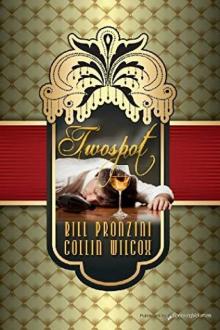 Twospot
Twospot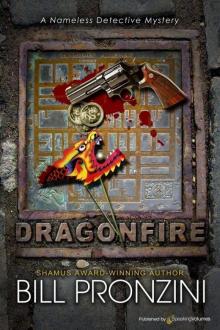 Dragonfire
Dragonfire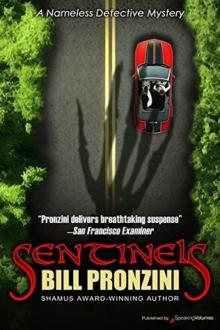 Sentinels
Sentinels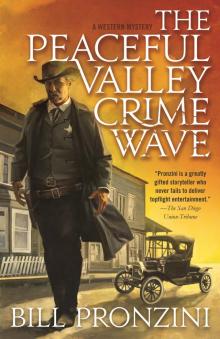 The Peaceful Valley Crime Wave
The Peaceful Valley Crime Wave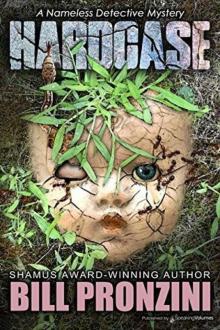 Hardcase
Hardcase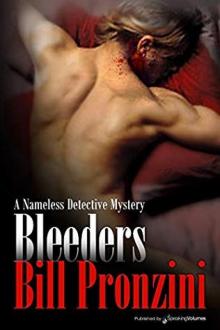 Bleeders
Bleeders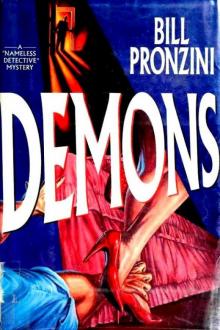 Demons
Demons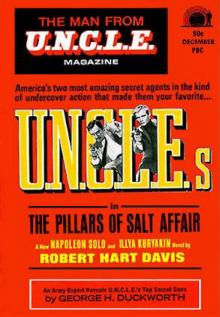 The Pillars of Salt Affair
The Pillars of Salt Affair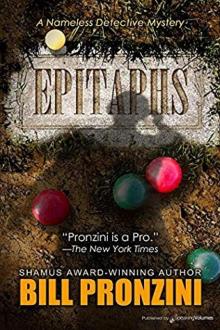 Epitaphs
Epitaphs Spook
Spook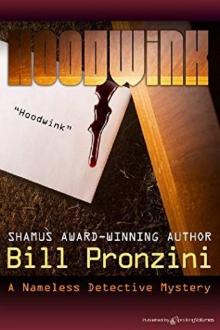 Hoodwink
Hoodwink Bug-Eyed Monsters
Bug-Eyed Monsters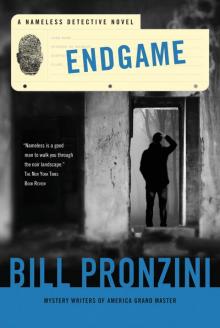 Endgame--A Nameless Detective Novel
Endgame--A Nameless Detective Novel The Hidden
The Hidden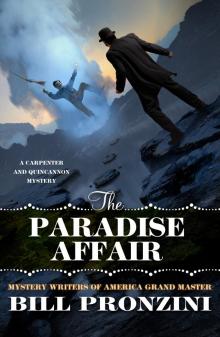 The Paradise Affair
The Paradise Affair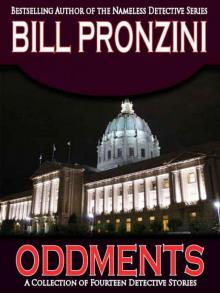 Oddments
Oddments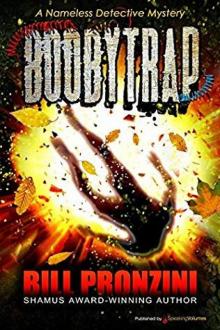 Boobytrap
Boobytrap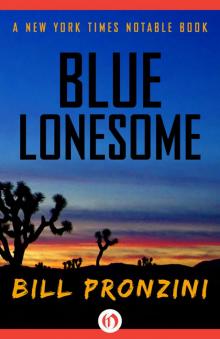 Blue Lonesome
Blue Lonesome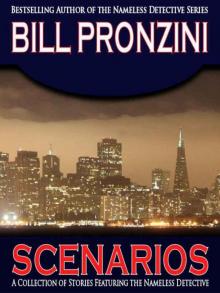 Scenarios - A Collection of Nameless Detective Stories
Scenarios - A Collection of Nameless Detective Stories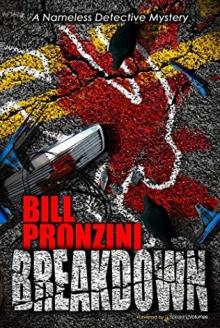 Breakdown
Breakdown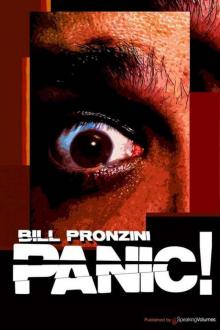 Panic!
Panic!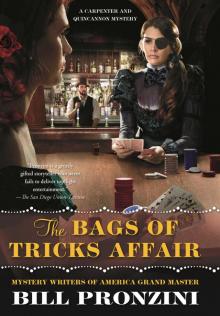 The Bags of Tricks Affair
The Bags of Tricks Affair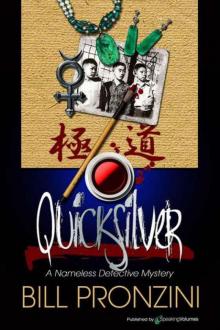 Quicksilver (Nameless Detective)
Quicksilver (Nameless Detective)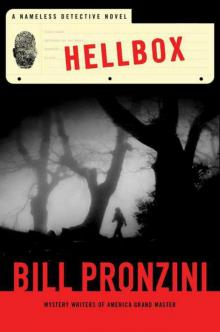 Hellbox (Nameless Detective)
Hellbox (Nameless Detective)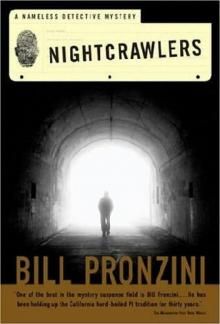 Nightcrawlers nd-30
Nightcrawlers nd-30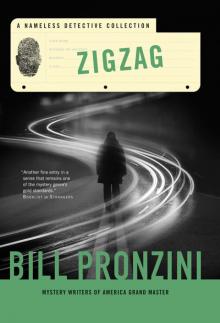 Zigzag
Zigzag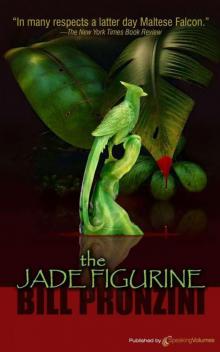 The Jade Figurine
The Jade Figurine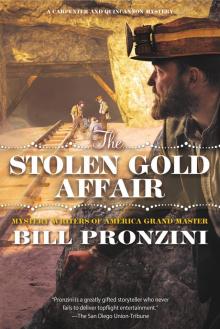 The Stolen Gold Affair
The Stolen Gold Affair The Stalker
The Stalker The Lighthouse
The Lighthouse Fever nd-33
Fever nd-33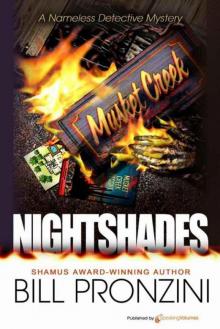 Nightshades (Nameless Detective)
Nightshades (Nameless Detective)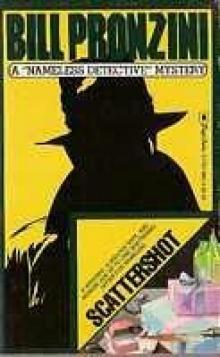 Scattershot nd-8
Scattershot nd-8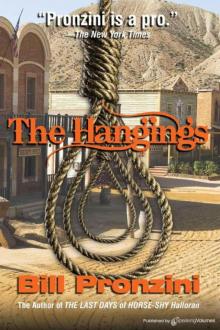 The Hangings
The Hangings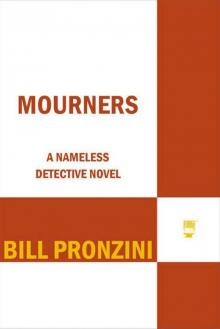 Mourners: A Nameless Detective Novel (Nameless Detective Mystery)
Mourners: A Nameless Detective Novel (Nameless Detective Mystery)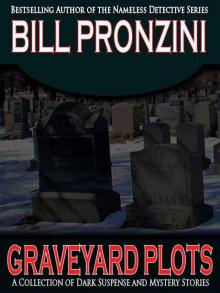 Graveyard Plots
Graveyard Plots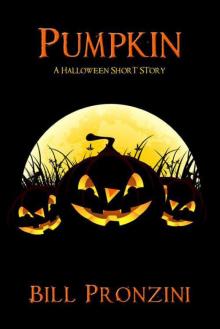 Pumpkin
Pumpkin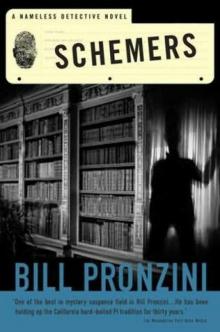 Schemers nd-34
Schemers nd-34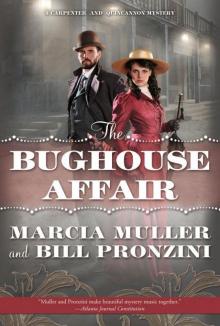 The Bughouse Affair q-2
The Bughouse Affair q-2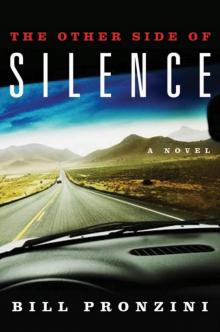 The Other Side of Silence
The Other Side of Silence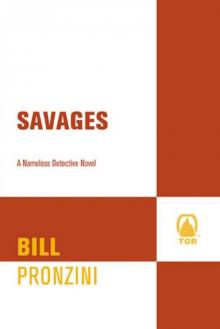 Savages: A Nameless Detective Novel (Nameless Detective Novels)
Savages: A Nameless Detective Novel (Nameless Detective Novels)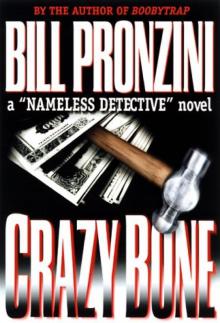 Crazybone
Crazybone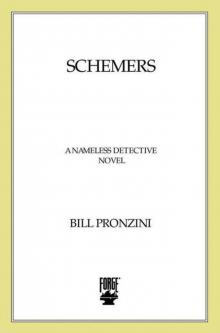 Schemers: A Nameless Detective Novel (Nameless Detective Novels)
Schemers: A Nameless Detective Novel (Nameless Detective Novels) Gun in Cheek
Gun in Cheek In an Evil Time
In an Evil Time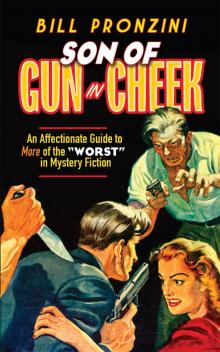 Son of Gun in Cheek
Son of Gun in Cheek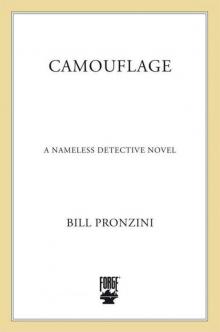 Camouflage (Nameless Detective Mysteries)
Camouflage (Nameless Detective Mysteries)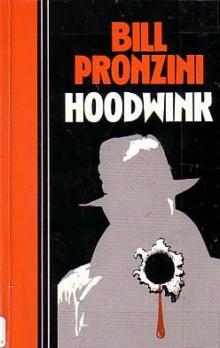 Hoodwink nd-7
Hoodwink nd-7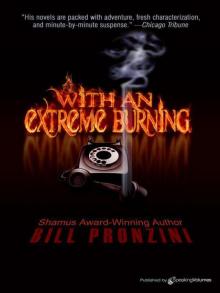 With an Extreme Burning
With an Extreme Burning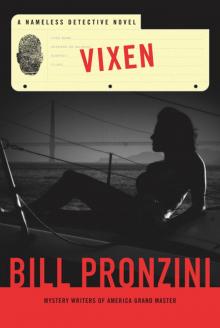 Vixen
Vixen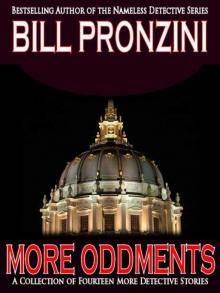 More Oddments
More Oddments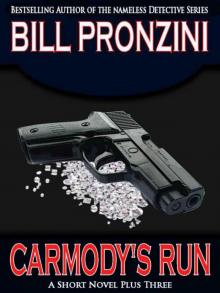 Carmody's Run
Carmody's Run Small Felonies - Fifty Mystery Short Stories
Small Felonies - Fifty Mystery Short Stories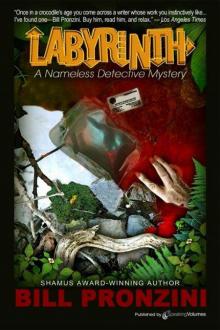 Labyrinth (The Nameless Detective)
Labyrinth (The Nameless Detective)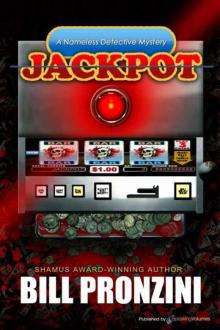 Jackpot (Nameless Dectective)
Jackpot (Nameless Dectective)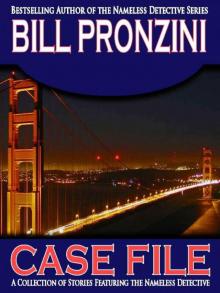 Case File - a Collection of Nameless Detective Stories
Case File - a Collection of Nameless Detective Stories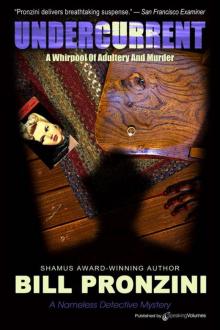 Undercurrent nd-3
Undercurrent nd-3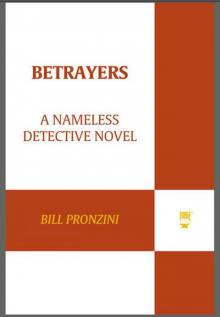 Betrayers (Nameless Detective Novels)
Betrayers (Nameless Detective Novels)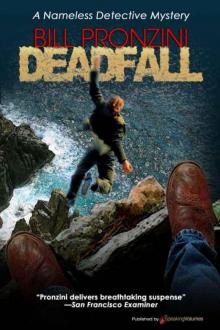 Deadfall (Nameless Detective)
Deadfall (Nameless Detective)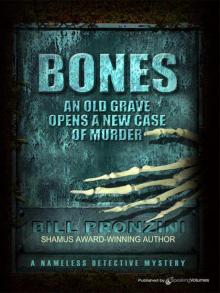 Bones nd-14
Bones nd-14 The Snatch nd-1
The Snatch nd-1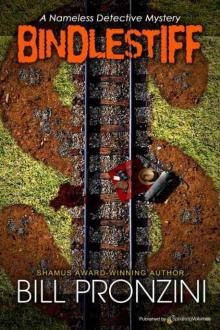 Bindlestiff nd-10
Bindlestiff nd-10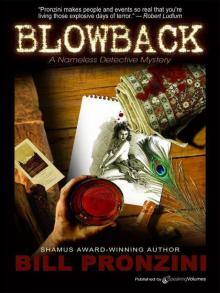 Blowback nd-4
Blowback nd-4 A Wasteland of Strangers
A Wasteland of Strangers Double
Double The Bags of Tricks Affair--A Carpenter and Quincannon Mystery
The Bags of Tricks Affair--A Carpenter and Quincannon Mystery Quarry
Quarry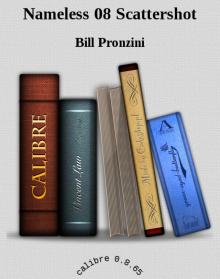 Nameless 08 Scattershot
Nameless 08 Scattershot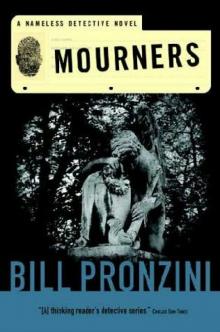 Mourners nd-31
Mourners nd-31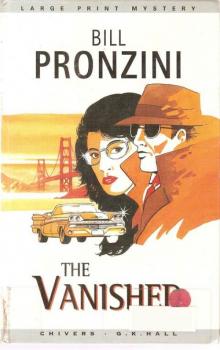 The Vanished
The Vanished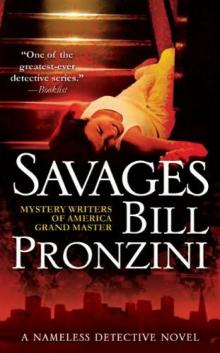 Savages nd-32
Savages nd-32 Quincannon jq-1
Quincannon jq-1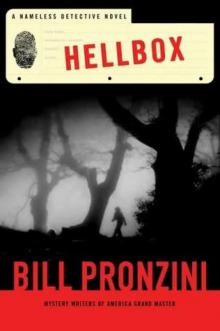 Hellbox nd-37
Hellbox nd-37 The Crimes of Jordan Wise
The Crimes of Jordan Wise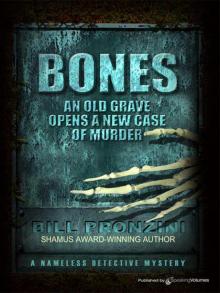 Bones (The Nameless Detecive)
Bones (The Nameless Detecive)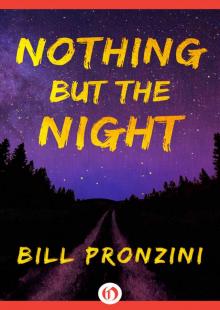 Nothing but the Night
Nothing but the Night Camouflage nd-36
Camouflage nd-36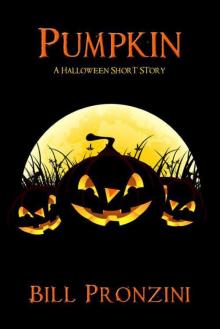 Pumpkin 1doh-9
Pumpkin 1doh-9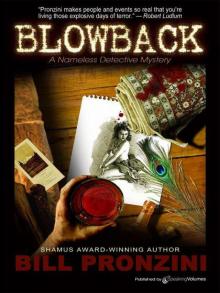 Blowback (The Nameless Detective)
Blowback (The Nameless Detective)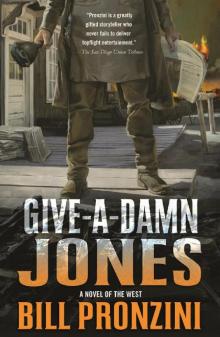 Give-A-Damn Jones: A Novel of the West
Give-A-Damn Jones: A Novel of the West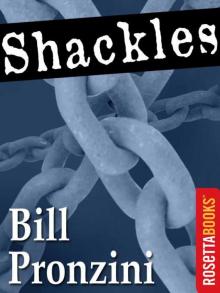 Shackles
Shackles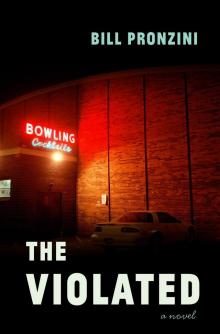 The Violated
The Violated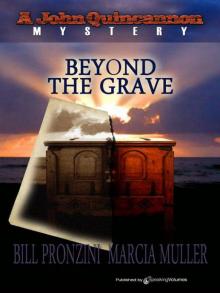 Beyond the Grave jq-2
Beyond the Grave jq-2![The Vanished - [Nameless Detective 02] Read online](http://i1.bookreadfree.com/i2/04/10/the_vanished_-_nameless_detective_02_preview.jpg) The Vanished - [Nameless Detective 02]
The Vanished - [Nameless Detective 02]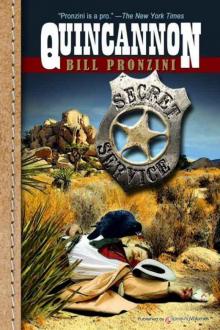 Quincannon
Quincannon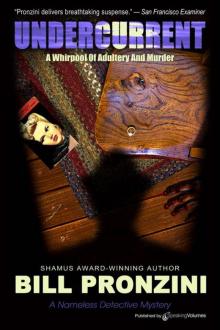 Undercurrent (The Nameless Detective)
Undercurrent (The Nameless Detective)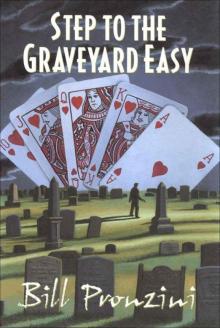 Step to the Graveyard Easy
Step to the Graveyard Easy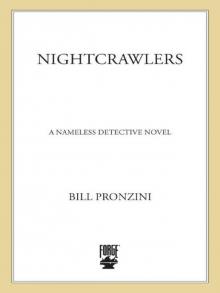 Nightcrawlers: A Nameless Detective Novel (Nameless Detective Mystery)
Nightcrawlers: A Nameless Detective Novel (Nameless Detective Mystery)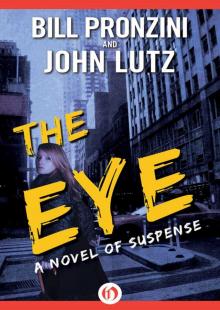 The Eye: A Novel of Suspense
The Eye: A Novel of Suspense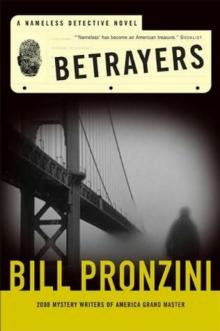 Betrayers nd-35
Betrayers nd-35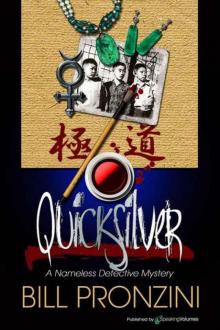 Quicksilver nd-11
Quicksilver nd-11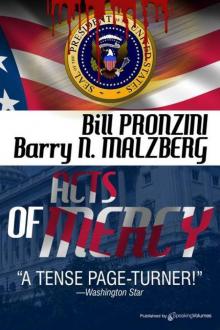 Acts of Mercy
Acts of Mercy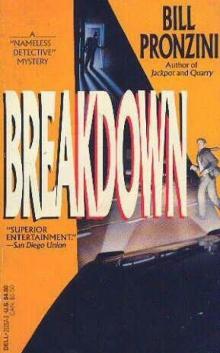 Breakdown nd-18
Breakdown nd-18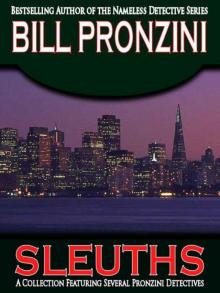 Sleuths
Sleuths![The Snatch - [Nameless Detective 01] Read online](http://i1.bookreadfree.com/i2/04/07/the_snatch_-_nameless_detective_01_preview.jpg) The Snatch - [Nameless Detective 01]
The Snatch - [Nameless Detective 01]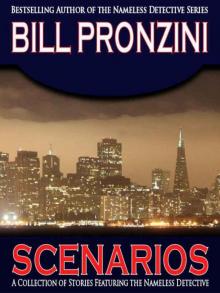 Scenarios nd-29
Scenarios nd-29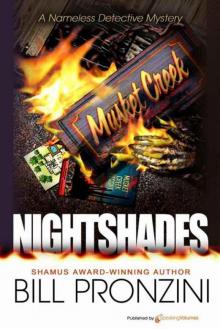 Nightshades nd-12
Nightshades nd-12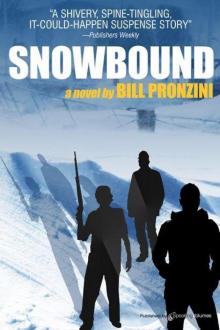 Snowbound
Snowbound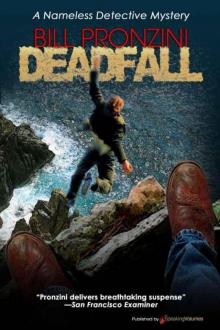 Deadfall nd-15
Deadfall nd-15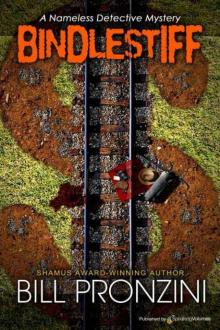 Bindlestiff (The Nameless Detective)
Bindlestiff (The Nameless Detective)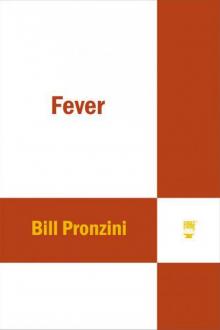 Fever: A Nameless Detective Novel (Nameless Detective Novels)
Fever: A Nameless Detective Novel (Nameless Detective Novels)